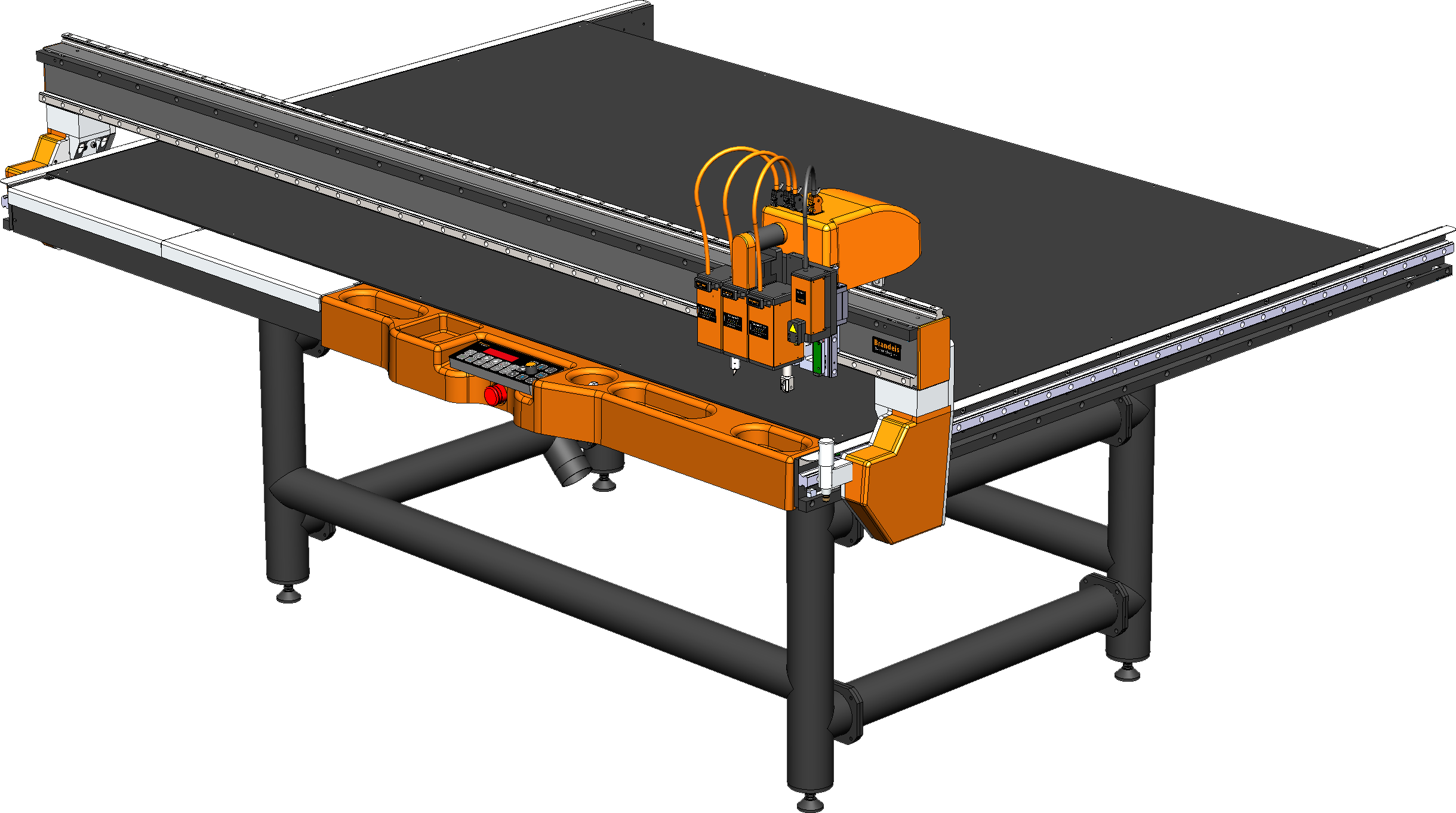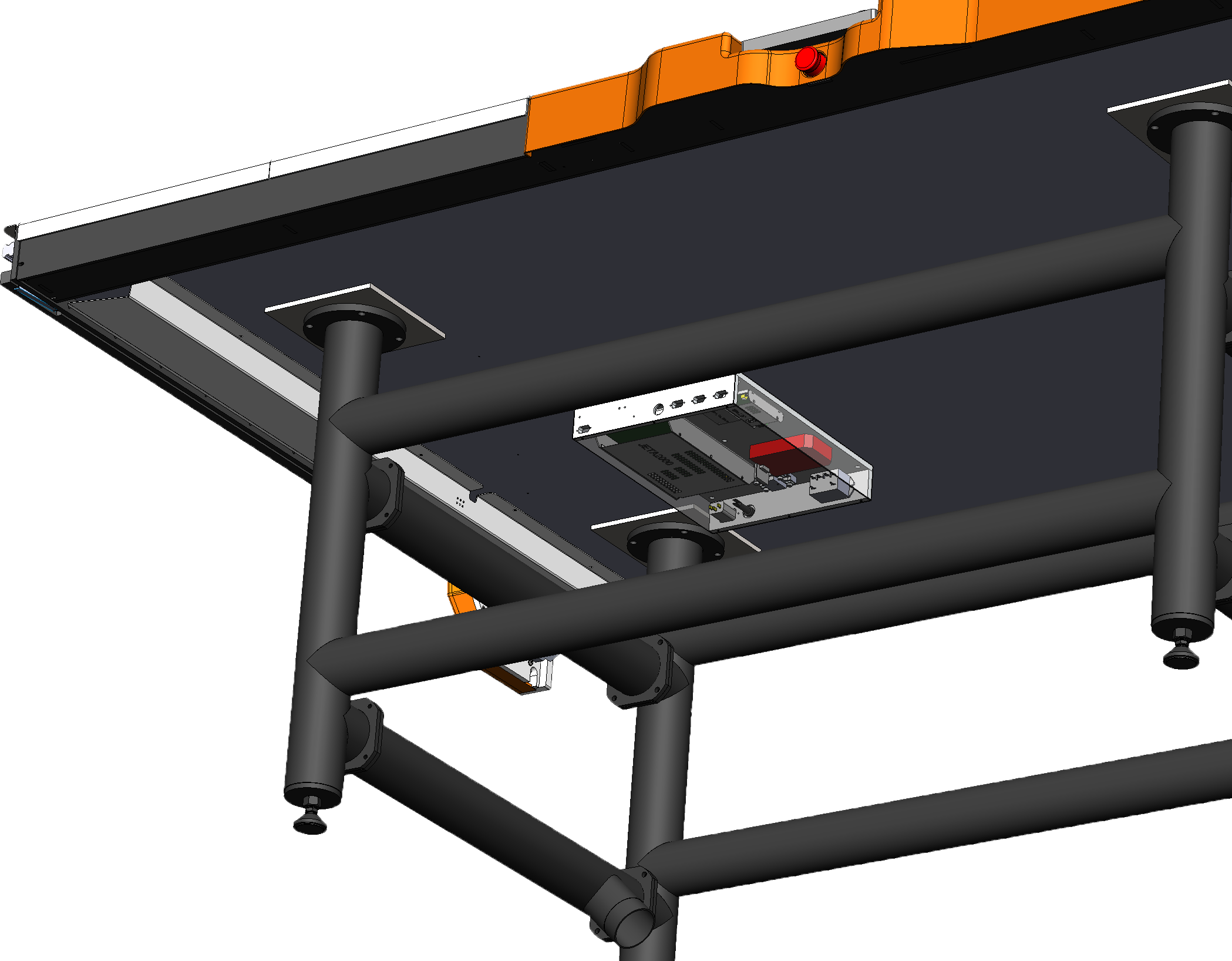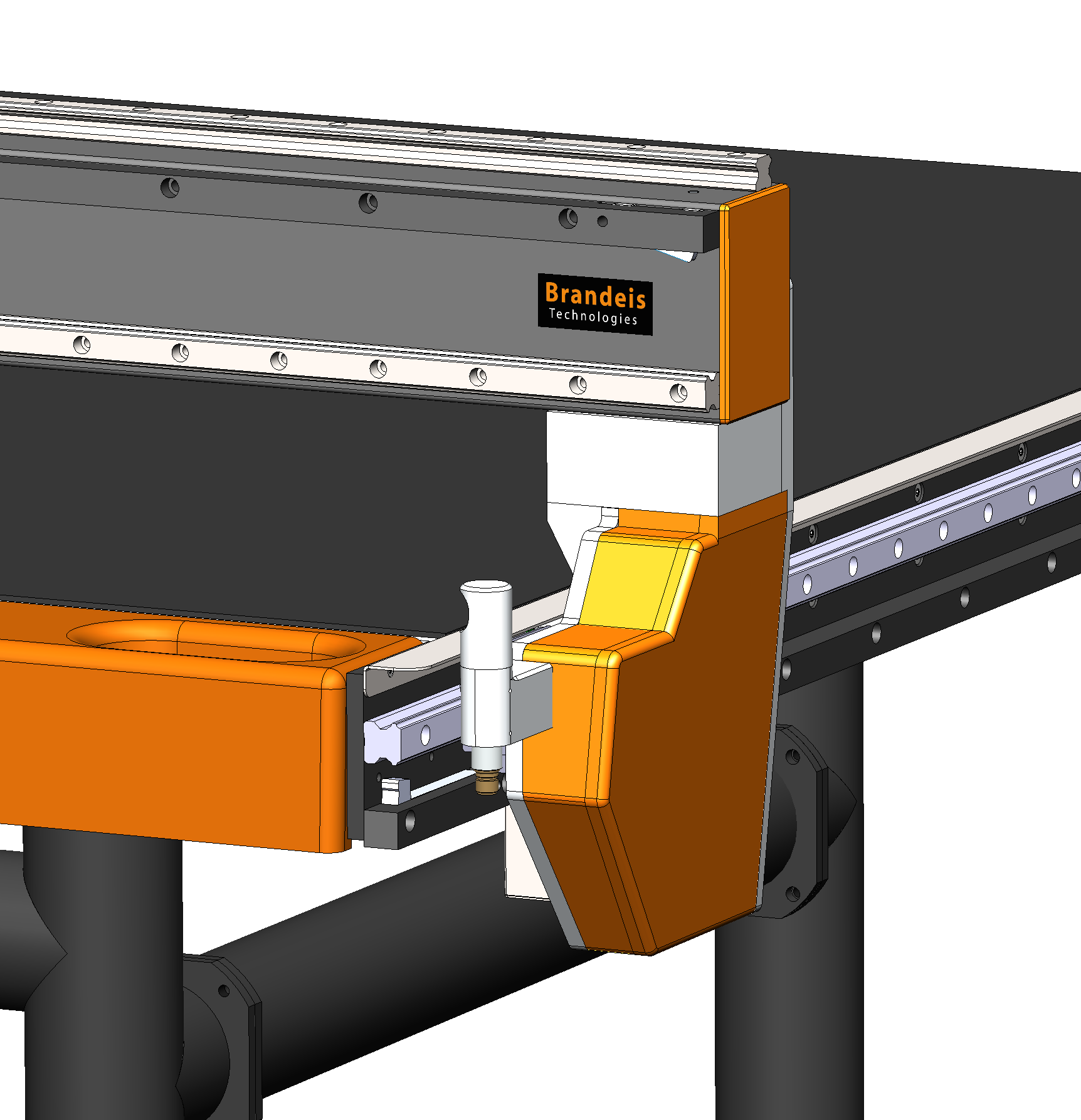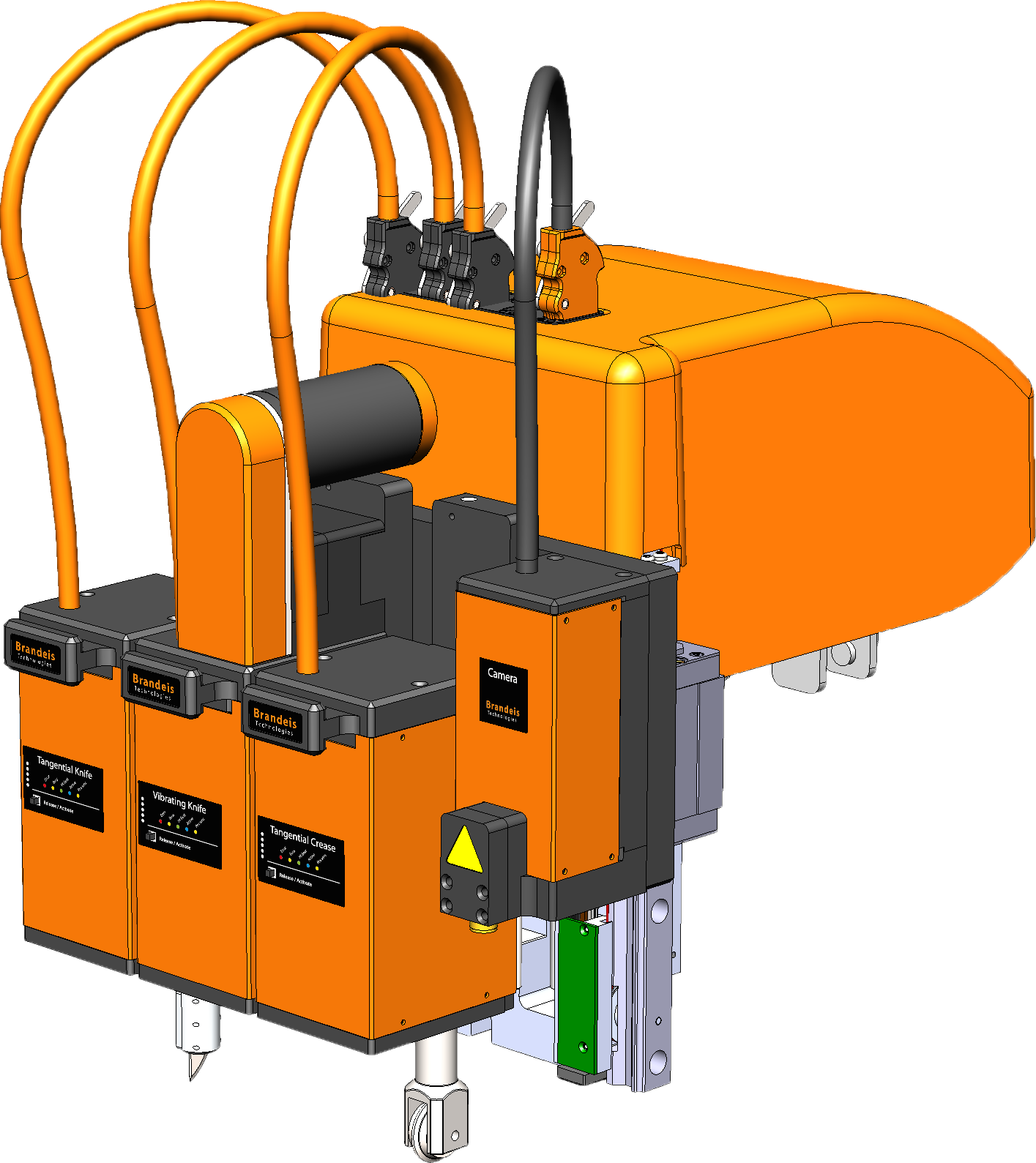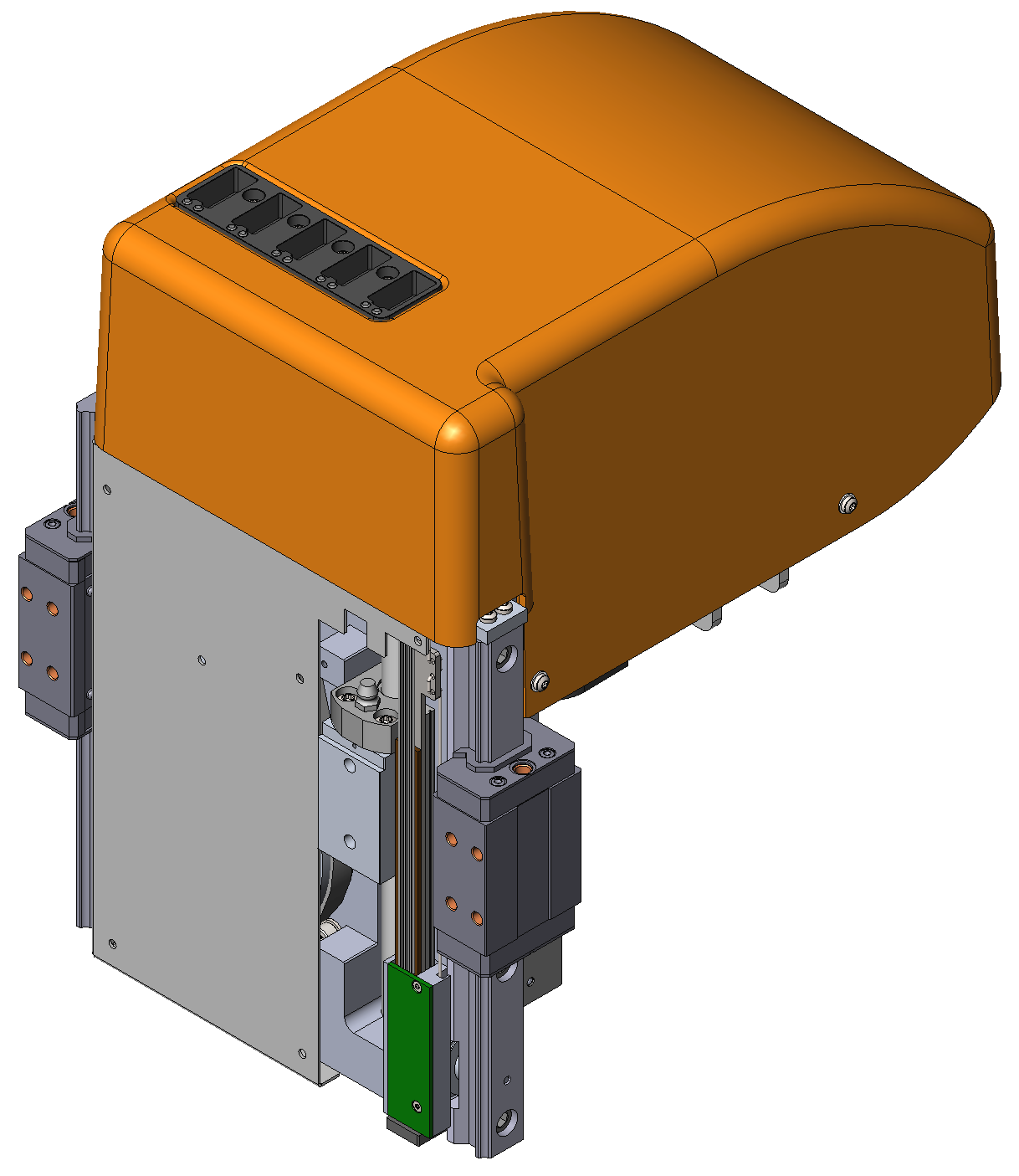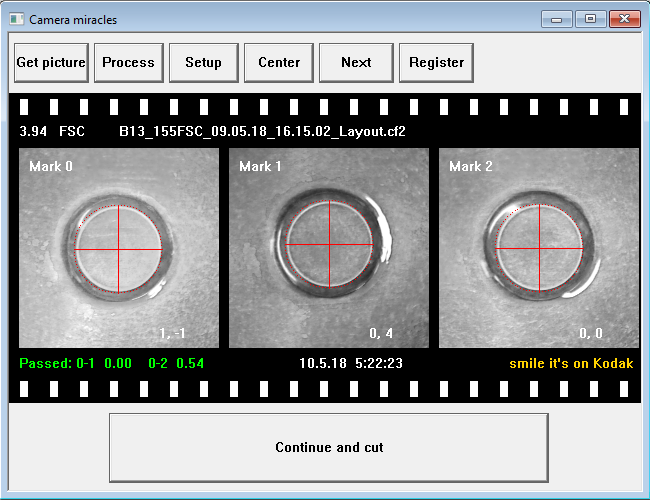Perpetis flexo
Cutting table for flexo plates
Perpetis is an universal user configurable cutting machine, based on modern electronic concept. Main focus was taken on the ease of use, high level of automation, lowest floor space and compactness of the machine.
Flexo variant was developed for easy integration with Kodak “TiffAsembler Plus” software. Machine is capable of importing CFF2 file format including registration marks, cutting commands and texts. Cutting path is during import preciselly optimized for satisfactory cutting, on most materials. Software can import also DXF and ACM formats, however not all informations are included in ACM format.
- Concept without toolhead
- Higher variability
- Servo driven tool selection
- No compressed air needed
- Optical toolbus for easy connection
- Complete electronics inside tool
- Safety improvements
- Easy automatic tool removal
| Cutting size (can be changed) | 2200 mm x 1500 mm |
| Total size | 2442 mm x 1854 mm |
| Height | 1500 mm |
| Power Machine | 1300 W 176 - 242 VAC |
| Vacuum | 3x 400V 6 kW (variable speed) |
| Computer, Monitor | Not specified |
| Max cutting speed | 900 mm/s (700 mm/s on each axis X, Y) |
| Max acceleration | 0,5 G (0,35 G on each axis X, Y) |
| Safety | Optical SICK |
Detailed description and machine concept
Perpetis is an universal user configurable cutting machine, based on modern electronic concept. Main focus was taken on easy of use, high level of automation, lowest floor space and compactness of the machine.
Flexo variant was developed for easy integration with Kodak “TiffAsembler Plus” software. Machine is capable of importing CFF2 file format including registration marks, cutting commands and texts. Cutting path is during import preciselly optimized for satisfactory cutting, on most materials. Software can import also DXF and ACM formats, however not all informations are included in ACM format.
Table is produced for customer plate sizes. Automatic selection of vacuum zones is taken automatically when file is open. Vacuum level can be specified in material definition and also automatically set, on electronically driven vacuum pump.
Custom made Flexo camera is capable of exact automatic finding circular registration marks on any known flexo plate, including transparent plates. By analyzing multiple pictures, camera finds the cirle edge and shape and calculates circle center. Process of mark recognition is fully automatic. Automatic file selection based on first registration mark, is under development.
Macro programming is designed for easy customization of machine behavior. Start of job, end of job, pressing of most of buttons, including custom definable buttons, will call macro file, if defined and user can set behavior of the machine, based on its needs. Ease of use and increase of eficiency by pressing a single button, can make work more convenient.
DC Servo driven machine is compact size. Machine total width is only 150 mm wider each side, compare to cutting area. All electronics is near motors, inside tools etc. All electronic components are fanless, including power suply. No electronic cabinet needed. System communicates on plastic optical fibres, having maximum communication robustness with minimum wires.
Connection to machine by IP protocol, allows control of multiple machines from any computer within the network. Acces to diagnostics of every controller in the machine, from the network, opens posibilities to complex remote diagnostics. Software libraries for every controller allows upgrade of any electronic component.
Concept without toolhead increases posibilities of the machine. Simple communication protocol toward tools alows future tool development, without much compromise. Optical “Toolbus” brings data to electronics inside tool. Tool is servo driven, icluding tool selection. No compress air is needed.
